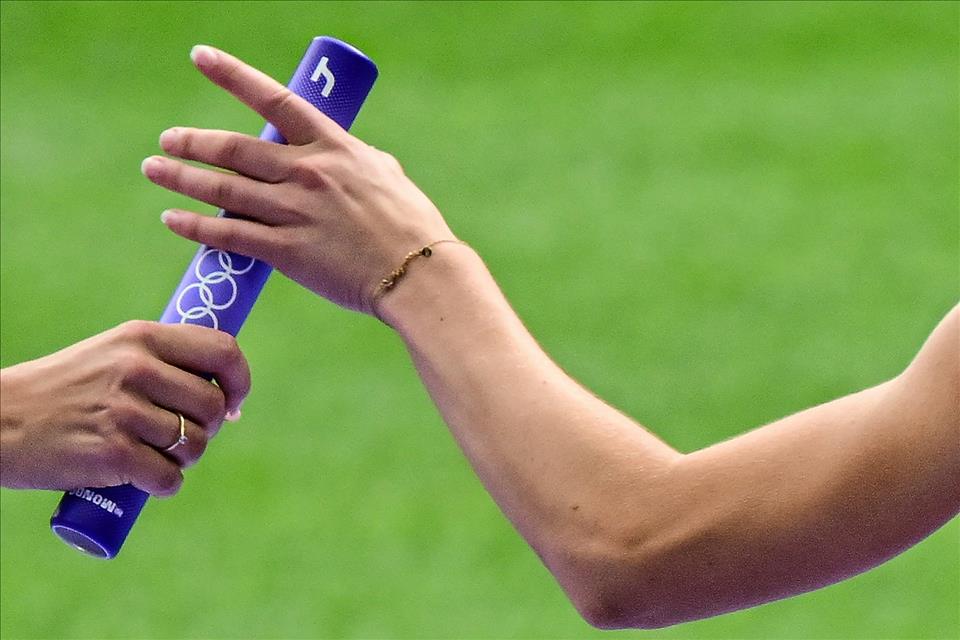
Have The Paris Olympics Cracked The Code Of The Circular Economy?
Sport organisations are no strangers to this trend. In France, a number of them are working hard to slash their events' carbon footprints. Ecotrail , for example, which organises annual running contests in the suburbs of Paris, gifts public transport tickets to the start line to all its participants and covers the train journeys of its runners. However, the circularity of mega sport events is still a work in progress.
A leader in this field, the Paris 2024 Organising Committee has set out to halve the greenhouse gas emissions released by the Rio 2016 or London 2012 Games, estimated at an average 3.5 million tonnes of CO2 equivalent (Mt CO2 eq). It is the first Olympics organisation committee to have appointed a Circular Economy Officer.
But what is the circular economy in the first place? The concept can be boiled down to three key principles :
1) Using fewer resources by prioritising existing ones 2) Making better use of these resources by promoting regenerative design 3) Relying entirely on renewable resources and eliminating the use of virgin resources
The circular economy's ten commitmentsIn November 2023, the Paris 2024 Organising Committee published ten commitments on how to make the circular economy happen:
Buildings - 95% of temporary infrastructure for Games venues - 100% second life for temporary structures and infrastructure
Furniture - 100% second life for venue furniture - 90% of marketing and signage products reused or recycled
Equipment - 100% of contracts incorporating plans for equipments' second life - At least 60% of sports, technological and safety equipment leased
Catering - 50% less single-use plastic in the consumption phase in catering - 80% of consumer waste avoided or recovered during the Games
Olympics merchandise - 15% of licensed products manufactured in France - 15% of licensed products made from organic or recycled materials
Most of these commitments correspond to the first principle of prioritising existing resources over new ones. As for the section on furniture, we can note that the committee has also already made headway with its repurposing goal . Hence in March, months before its first use as part of the Olympics, some of the 62 400 office chairs, desks and shelves, were already up for pre-sale for the period following the games. Other concrete announcements have been made to honour the commitment to ensuring a second life to infrastructure, such as the news that the new aquatic centre in Seine Saint Denis would now serve school chidren's swimming classes .
What the Charter doesn't mentionHowever, the strategy fails to mention energy sources or any of the energy-related emissions necessary to make the Paris Olympic Games happen. Only little attention is paid to alternative consumption models such as rental, leasing and sharing. For example, 60% of the sports, technological and security equipment is leased . Local production is favoured but only to a very low extent as only 15% of licensed products are made in France and use organic or recycled materials. This is a rather poor result with the perspective of small and local productions and consumption circuits as further feature of the circular economy.
In March 2024, Paris 2024 make a first attempt of taking stock of the impacts of the circular strategy. Thanks to the application of a responsible purchasing strategy “90% of six million resource elements used will be (re)deployed” .
Overall, heads up to the Paris 2024 organising committee, there is a real, serious and respectable effort to make the Olympic Games more circular, but the ball is already over to Los Angeles to make the Games truly circular.

Legal Disclaimer:
MENAFN provides the
information “as is” without warranty of any kind. We do not accept
any responsibility or liability for the accuracy, content, images,
videos, licenses, completeness, legality, or reliability of the information
contained in this article. If you have any complaints or copyright
issues related to this article, kindly contact the provider above.


















Comments
No comment